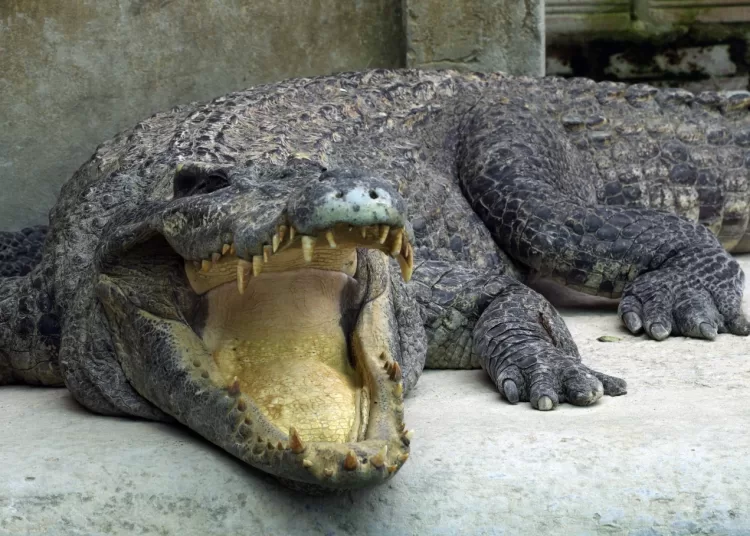PHNOM TAMAO, Cambodia — A tiny snout poked out to widen the crack of the slowly shattering eggshell.
The Siamese crocodile was taking its time, lagging others that had already wriggled out, chirping, into the sand. Adults can be up to 4 meters (13 feet) long and weigh up to 350 kilogram (770 pounds). They have few natural predators. But these hatchlings — each roughly the size of a New York hotdog — are vulnerable and their chorus of shrill calls was a signal for mothers to protect them and for stragglers to catch up.
Hor Vichet, a zookeeper at the nonprofit Fauna and Flora’s breeding center for the critically endangered reptiles in Cambodia’s Phnom Tamao, broke the rest of the shell.
“It’s time to go into the world,” he said.
Siamese crocodiles are making an unlikely comeback. Once widespread across Southeast Asia, demand for leather made from their skins decimated wild populations in the last century. Thousands were hunted or captured for breeding at farms. By the late nineties, they were thought to be extinct.
But a 2000 survey in the Cardamom Mountains in western Cambodia found a vestige of a wild population. These misty rainforests were among the last strongholds of Khmer Rouge guerrillas who fought the government until 1999. That, combined with the reverence of local Indigenous communities saved this lingering enclave of crocodiles. But they were still too few and too scattered to recover the population.
Conservationists realized that saving the species would require captive breeding of purebred, fertile crocodiles. The crocodile farmers who had nearly hunted the species to extinction now play a vital role in that effort.
Today there are about 1,000 Siamese crocodiles in the wild, roughly 400 in Cambodia and the rest scattered in Vietnam, Laos, Thailand and Indonesia. Protecting the reptile also requires safeguarding its habitat in the Cardamom Mountains -– a diverse ecosystem that is one of the last surviving rainforests in Southeast Asia. It stretches over an area larger than Denmark, helping to trap earth-warming greenhouse gases from the atmosphere.
The efforts are finally paying off: The first crocodiles were reintroduced into the wild in 2012 and they have begun breeding in the wild: over a hundred eggs were discovered in the forests in July, the most so far. “We are still far from being able to say the species is in a good place,” admitted Pablo Sinovas of Fauna and Flora. “But it is making progress.”
The conservationists faced big challenges when they began their project in 2011. There were over 1.5 million crocodiles languishing in farms across Cambodia, Thailand and Vietnam, but few were purebreds. Farmers had bred Siamese crocodiles with larger, more aggressive species to get skins with textures demanded by fashion brands. Releasing those hybrids into the wild might hasten the disappearance of the purebred species.






Discussion about this post